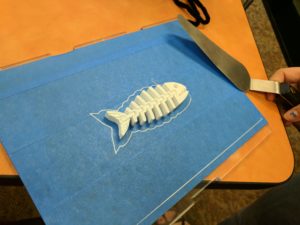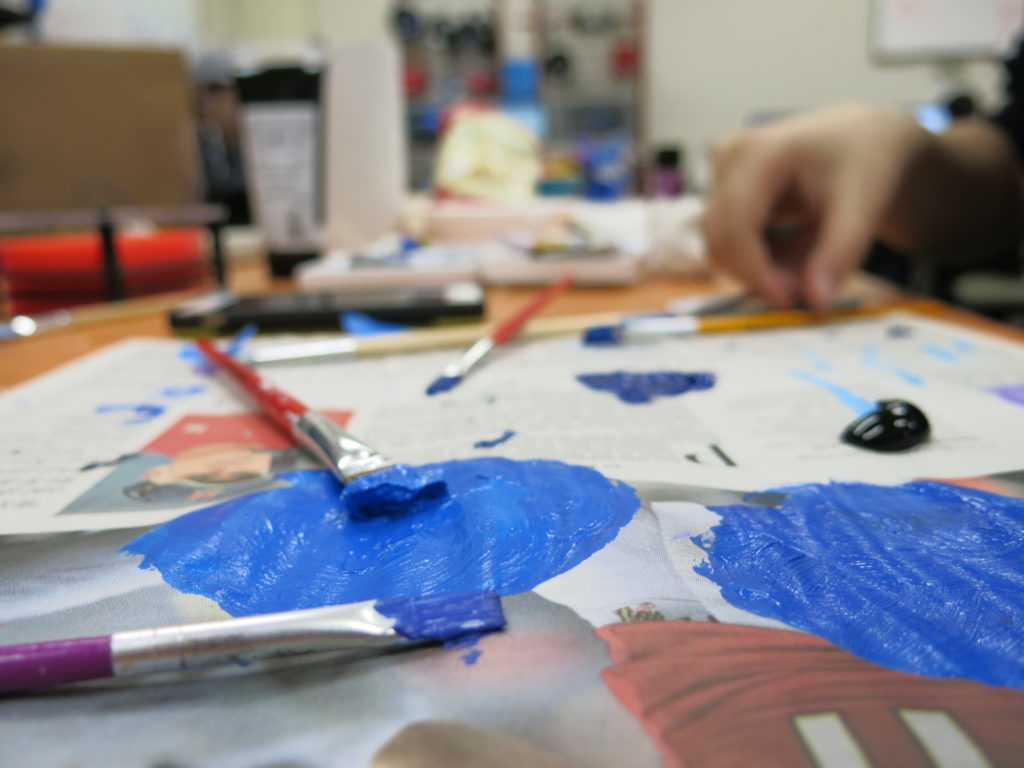I’ve been struggling to write out a clear and concise vision of the ThinkLab. Every attempt has been thwarted by my attempt to explain all the details that have led me to the conclusions that I have come to. As you can imagine this does not make for clear and concise writing. So, instead of writing one blog post that works through everything that I’ve been thinking about over the past year I’m writing a series of posts that will help clarify my thinking around different areas. I hope bounding my posts to particular aspects will help me hit that publish button and get me to a point where I can say “This is what I want to come out of this space”.

When it comes to the most recent explosion of interest in making and DIY (what has been called the “maker movement’) there have been certain kinds of making that have been more heavily focused on. Activities such as 3D printing, robotics, microcontrollers, drones, etc are the types of making that have been prominently featured as representative of the maker movement. Libraries and schools everywhere started buying 3D printers and little programmable boards. There were clearly defined consumable products that were considered important to have in a makerspace. Currently the makerspace I manage has many of these things (3D printers, 3D scanners, arduinos, robotics kits), but we also have sewing machines, e-textiles, and crafting materials.

It isn’t hard to see what happens once you start to privilege certain things as “making” inside a movement. A quick google search will easily turn up criticism that details the problematic nature of this privileging in major publications like Make or at Maker Faires. To be fair Make magazine has done a bit better over the last couple years of being more inclusive of what counts as making. Yet, there is a persistent idea that a particular kind of making happens in makerspaces.
A while back I read this excellent post by Kim Jaxon titled “Connecting Making, Designing and Composing” that really helped me connect the pieces on things I felt were problematic about teaching making. In the piece she notes that the recent trend in teaching people “design thinking” or the skill of “making” has the same pitfalls as assuming that the freshman comp class teaches students how to be writers. As if the skill of writing, once learned, was something that you had and can be used in any situation. Anyone who is trained in a discipline will have developed a certain way of writing that is appropriate for their field. What works for a creative fiction piece is not the same thing that works for a research biology paper, or, “writing is not writing is not writing”. A quote:
…my concern is that we are about to follow the same path with design and making as we have with the teaching of writing: we talk about introducing “design thinking” and “making” to students in general, instead of asking what it means to design like an engineer or use design like a graphic designer or ask what design problems look like to a physicist, all of whom talk about design, and the role of design in meaning making, differently in their respective fields.
While there can be a lot of overlap in approaches between disciplines to design problems there is still the reality that these approaches are emergent from the discipline and aren’t some rules handed down from above. There is no, “Though shall empathize, define, ideate, prototype and test.” written in stone to be obeyed by all (although it is a pretty good guideline for a lot of things). It seemed presumptuous to me that I could come in to a discipline’s space bearing arduinos, sewing machines, and 3D prints telling them how they would all become makers now. No, I was introducing them to a particular kind of making, which, could be useful to them, but was certainly a paradigm of making that comes with a set of underlying assumptions.

Obviously, at some point in forming a makerspace you have to define a scope of services because a space can’t be all things to all people, but in making these decisions about the space I have to acknowledge that there is a whole world of possibility and I am choosing particular kinds of making. I want to make sure that the choices I make are thoughtful and aren’t necessarily driven by what the maker movement thinks is the important tech to have. So, how is one to decide what kinds of making to support? And then how does one go about learning to be a maker in all these disciplines? Another quote from the piece:
Like many of you, I will continue to be a champion for doing, making, tinkering, and composing ideas and artifacts. At the end of the day, design and making could be exactly the trojan horse we need to infuse constructivist pedagogies in teaching and learning. An affordance of a maker space is also its potential for breaking down disciplinary silos: a maker space can bring together a variety of disciplines and make explicit the kinds of problems various disciplines can solve, and more importantly, highlight the interdisciplinary approaches to meaning making and problem solving. As we take this step toward design and making in schools, my hope is that we keep an eye on the messy, recursive, and disciplinary ways we make and design.
I’m firmly of the mind that making and makerspaces can be as wide ranging as one can imagine. Therefore a makerspace should work with people in the community they serve to figure out where there are unmet needs around making and consider whether it can help support those kinds of making. It can be an in depth as working with a faculty member to learn how to take arduinos to the next level and training up tutors to help students complete complex projects that require numerous sensors and lots of coding. Or it can be as simple as noticing that you have an activist student body that often goes out to protest so maybe it would be beneficial to them to keep a stash of poster board, stencils, and paints on hand so they can make their signs. Is that not making? And imagine the conversations that could happen in a space where students are creating protest sign. Being open to possibilities in the space can mean that different kinds of makers will cross paths and who knows what might come out of that kind of cross-disciplinary interaction? I’m still working out how one manages something that can be so wide open and how to prepare student tutors to help others in this kind of space, but I think it is possible. There will be times I have to say no to things, but I want to say no for the right reasons. It is my hope that I run a makerspace that will do it’s best to find ways to help people make things or if I can’t help them point them to the places that can.


